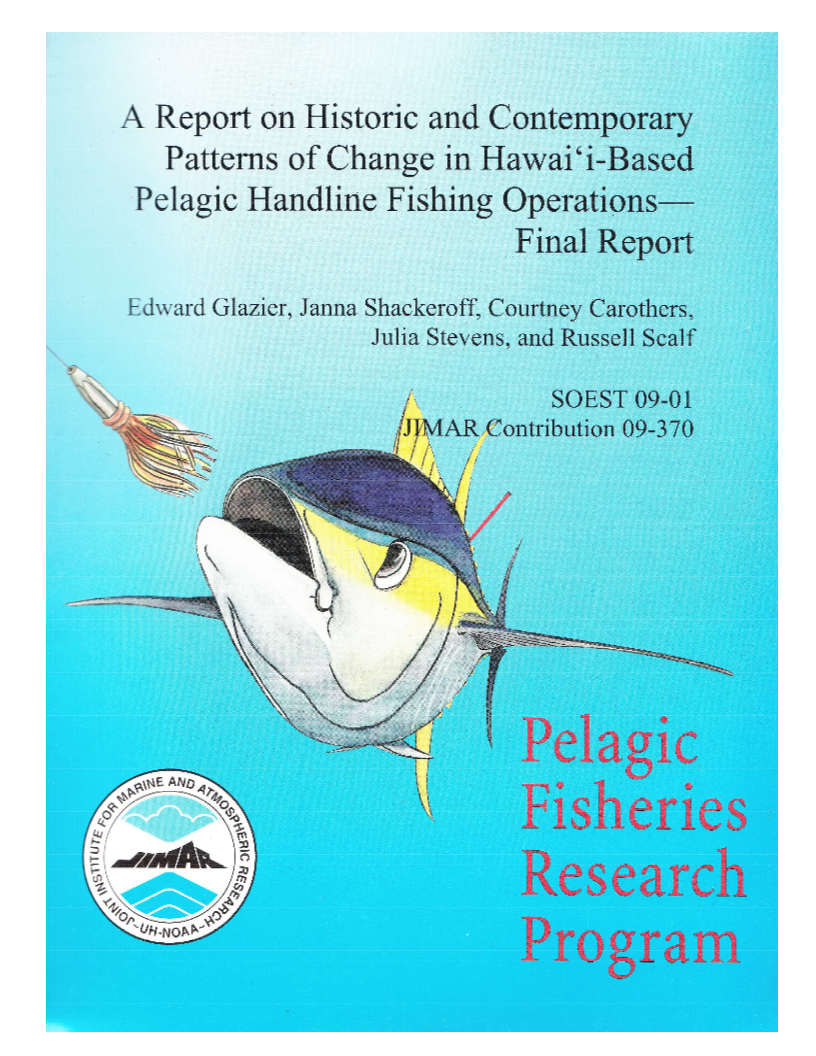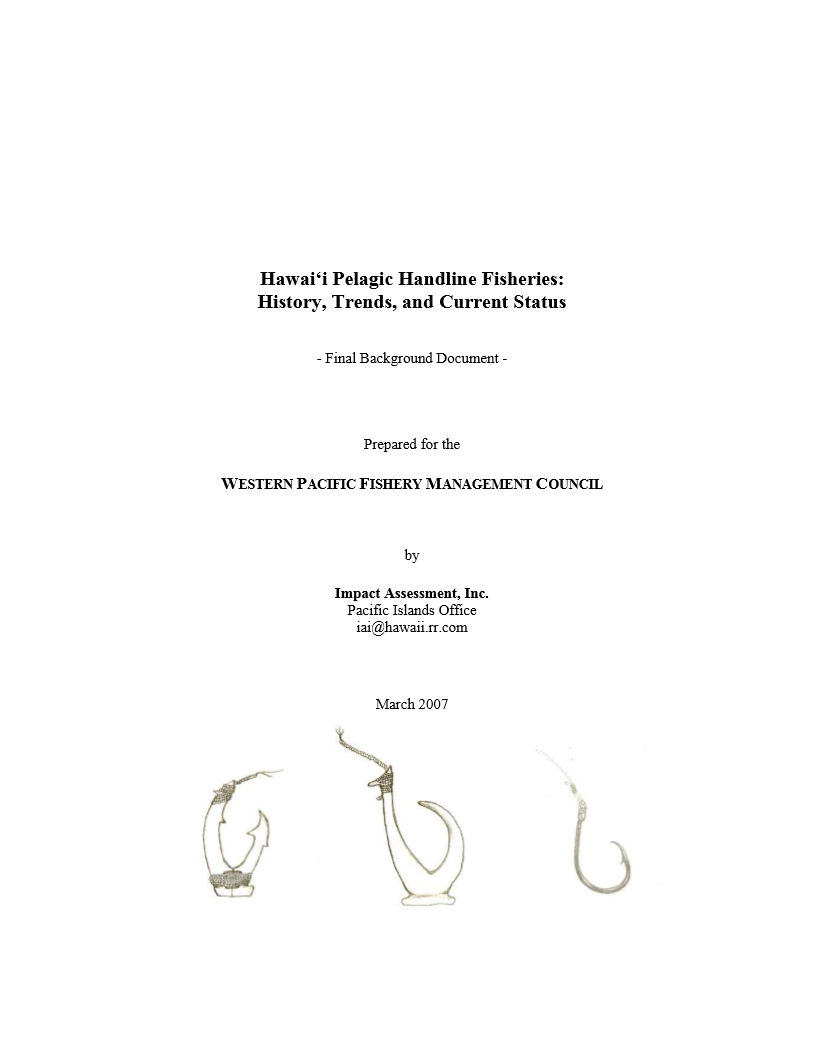Small Boat Bigeye and Yellowfin Tuna Operations and Regulatory Scenarios in the Main Hawaiian Islands
This report summarizes key findings from two PFRP projects that were designed to examine change in Hawai‘i’s small-boat commercial handline fisheries. The first study examined historical aspects of handline fishing in the islands, and diminishing participation and production in the ika-shibi fishery, a long-standing and once-lucrative yellowfin and bigeye tuna fishery specific to Hawai‘i Island. The second study examined the history and contemporary status pelagic handline operations at Cross Seamount and at private fish-aggregating devices (PFADs) around the islands. Data sources included catch and effort data, seafood dealer data, direct observation of handline operations, review of pertinent literature, analysis of regional employment information and other relevant data, and numerous in-depth interviews with participants in the harvest and distribution sectors. Research findings counter the working hypothesis of a widespread shift from ika-shibi fishing to fishing at PFADs. Convergence between a variety of social, demographic, and economic factors amidst a period of diminishing availability of tuna better explains the current status of the ika-shibi fishery and ongoing challenges in the PFAD fishery. While the availability of tuna is obviously pivotal to the status of the fisheries in question, tuna populations are subject to a complex array of biological, oceanographic, and human interactions. This report furthers understanding of the human context of small-scale pelagic fisheries in the Hawaiian Islands, with implications for the management of pelagic fisheries elsewhere in the Pacific Basin.
Published in
Marine Fisheries




